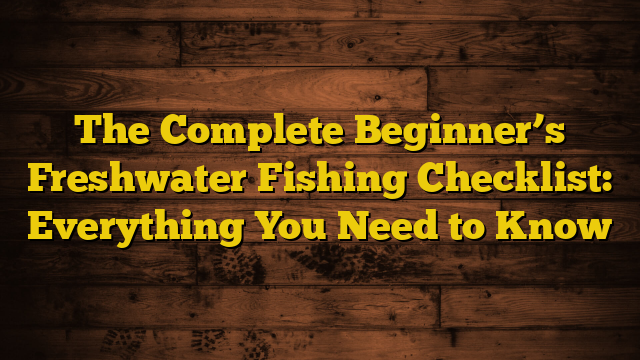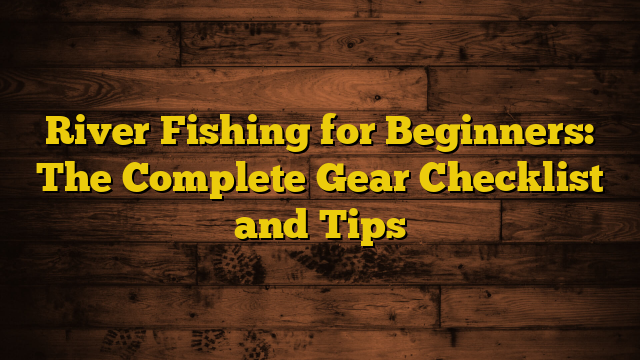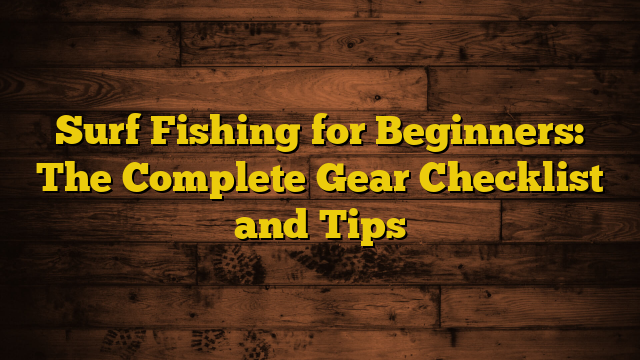Ready to start chasing trout in freshwater rivers, streams, and lakes? This detailed trout fishing checklist will provide everything needed to get started, from essential rods and reels to productive lures and techniques to put you on rainbows, browns, brookies, and more.
Few freshwater species excite anglers like trout do thanks to their spirited fights, great tablefare, and wild origins. But successfully catching trout does require specialized tackle, locations, and approaches compared to other fish.
Use this comprehensive guide to prepare yourself for productive days on the water stalking these prized gamefish. We’ll cover trout behavior, seasonal patterns, go-to lures, ideal habitat, and fighting tactics to prime first-timers for success. Follow this checklist closely and reeling in your personal best trout becomes much closer to reality.
Rod and Reel Recommendations for Trout
Having a sensitive trout rod and smooth reel optimized for lighter tackle provides a key advantage when finessing bites and fighting fish. Ideal beginner setups include:
- 5-6’ ultralight or light power fast action spinning rod – Detects subtle bites and makes accurate casts
- Light spinning reel with smooth drag – Handles screaming runs of large trout
- 4-8 lb test monofilament line – Enough strength without spooking pressured trout
- Affordable rod/reel combos under $75 – Deliver quality without breaking the bank
With a balanced trout outfit, you’ll have a blast fighting hard-charging fish without wearing out your arms.
Must-Have Trout Fishing Terminal Tackle
Terminal tackle like hooks, weights, swivels, and leaders allow you to rig baits naturally and ensure solid hooksets when bitten. Must-haves include:
- #6-14 treble hooks – For suspending baits like powerbait off the bottom
- Size #10-14 aberdeen hooks – Single hooks for worm/bait rigging
- Split shot and slip sinker weights – Get bait down to trout holding deep
- Ball bearing swivels – Prevent line twist when casting and allow lures to spin
- 4-6 lb fluorocarbon leaders – Nearly invisible line helps get finicky bites
Carry a variety of terminal tackle to adapt and finesse pressured trout in clear, low water conditions.
Productive Trout Fishing Lures and Baits
Matching the right lure to the season, water clarity, and retrieve cadence triggers the most strikes. Keep these deadly trout lures tied on:
- Spinners like Mepps, Panther Martins, Rooster Tails – Flash and vibration provokes strikes
- Trout jigs tipped with maggots, mousses, or dough – Vertical presentation trout can’t resist
- Spoons – Wobbling and fluttering action imitates injured baitfish
- Crankbaits that dive 2-6 feet – Lipless for speed or floating for topwater poppers
- Marabou jigs – Their pulsing feather tails mimic small prey
- Dough baits like Powerbait – Bright colors catch fish and kids!
- Natural baits like nightcrawlers, salmon eggs, minnows – Drift rigged or bottom bounced
Try different retrieves until fish show a preference. Speed up lures and baits in warmer conditions.
Helpful Trout Fishing Tools and Accessories
Specialized trout gear helps anglers handle fish safely, maximize drifts, and manage tackle/lures efficiently:
- Polarized sunglasses – Spot fish holding in clear shallow waters
- Creel bag – Safely transports your catch after cleaning
- Long nose pliers – Remove swallowed hooks from deep in gullets
- Hook sharpener – Penetrate tough mouths every time
- Fly box – Keeps all those tiny trout flies organized
- Fishing gloves – Protects hands from abrasions and cuts
- Stringer – Keep your limit alive and fresh in the water
- Folding knife or multi-tool – Handle gear repairs streamside
- Wading staff – Provides stability and balance in rivers
- Waterproof box – Keeps items like phones and keys dry
Come equipped with specialized tools for increased success and safety when wading or fishing from shore.
Locating Productive Trout Fishing Spots
To find actively feeding trout, focus efforts on locations like these:
- Rapids, riffles, and pool tailouts – Prime feeding zones with drifting food
- Confluences where rivers meet – Temp, oxygen, and food levels ideal for trout
- Creek inlets into lakes – Cooler water tributaries that hold trout
- Below dams and obstructions – Converging currents wash food to trout
- Shaded banks – Provides protection on hot sunny days
- Bends and drop-offs – Breaks and depth changes trout hold in
- Overhanging vegetation – Dangles terrestrial insects that drop into water
- Submerged wood structure – Breaks current and offers ambush points
- Rocky shelves, ledges, and shoals – Hard structure that attracts baitfish
Use maps, apps, and water clues to identify promising but overlooked trout spots.
Useful Trout Fishing Resources for Beginners
Learning from experienced anglers through videos, websites, magazines, and local groups helps newcomers improve much faster. Recommended resources include:
- Local fly fishing clubs and guides – Insider tips for streams near you
- Guided float or wade trips – Learn from experts on the water
- YouTube how-to’s – Knot tying, rigging, reading water tutorials
- Websites like Troutster and Wideopenspaces – Species-specific advice
- Regional trout fishing books – Tactics for your local watershed
- Magazines like Trout Unlimited – Stories on gear, flies, locations
- TV shows like Fly Fishing the World – See tactics in action
- Forums and groups – Get tips from passionate trout anglers
Tap this wealth of knowledge to avoid the steep learning curve of self-teaching. Finding and catching trout becomes much easier.
Get Started Reeling in Your Trout of a Lifetime
This complete trout fishing checklist prepared you to start targeting trout in your local waters. Follow it closely and checking a new personal best trout off your bucket list is within reach.
Remember to invest time honing fundamental skills like mending line, choosing natural baits, accurately casting, and patiently fighting fish. Persistence leads to mastery. Follow regulations and obtain required licenses and permits.
Soon enough your capabilities will grow enough to pay forward hard-won expertise by mentoring other newcomers. That friendly guidance perpetuates the sport we all love.
Don’t wait another day dreaming about your next drag-peeling run or river adventure! Use this detailed beginner’s guide and make trout fishing memories you’ll cherish for a lifetime.







